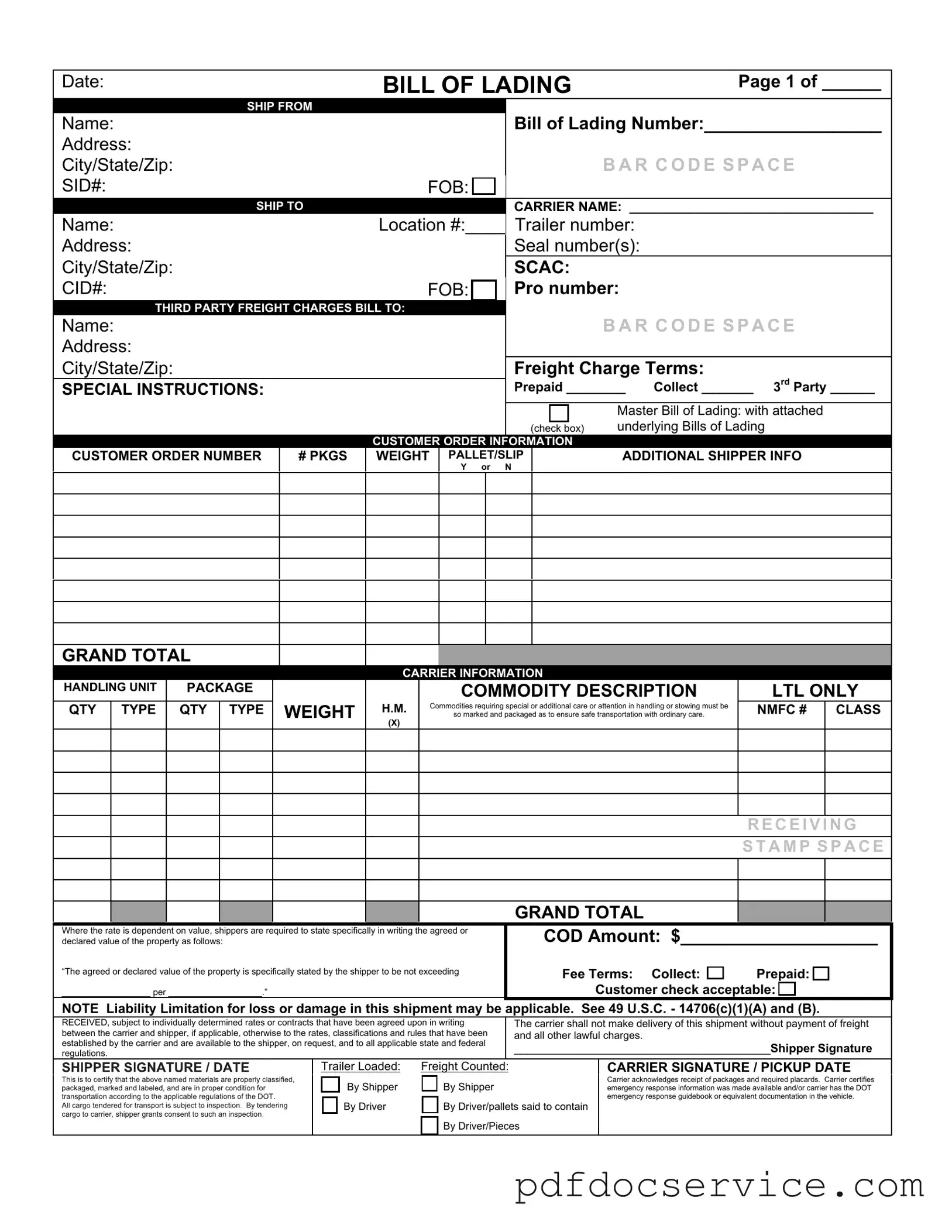What is a Bill of Lading?
A Bill of Lading is a legal document issued by a carrier to a shipper. It serves multiple purposes: it acts as a receipt for the goods being transported, a contract for the transportation of those goods, and a document of title. This means it can be transferred to others, which is important for the sale of goods in transit.
The Supplement form is used to provide additional information or amendments to the original Bill of Lading. This may include changes in the quantity of goods, alterations in shipping instructions, or updates regarding the consignee. It ensures that all parties involved have the most accurate and current information regarding the shipment.
The shipper, carrier, and consignee are typically involved in filling out the Bill of Lading and the Supplement form. The shipper initiates the document, while the carrier completes it upon receipt of the goods. If any changes or additional details arise, the Supplement form is completed by the relevant parties to ensure clarity and compliance.
The Bill of Lading generally requires the following information:
-
Shipper's name and address
-
Consignee's name and address
-
Description of the goods being shipped
-
Weight and quantity of the goods
-
Shipping instructions
-
Carrier's name
-
Date of shipment
Providing accurate information is crucial, as it helps prevent disputes and ensures that goods are delivered correctly.
If there are inaccuracies on the Bill of Lading, it can lead to significant issues, such as delays in delivery, additional costs, or even legal disputes. It is essential to review the document carefully before finalizing it. If errors are discovered after the fact, a Supplement form can be used to correct the information, but it’s important to notify all parties involved immediately.
Can a Bill of Lading be transferred to another party?
Yes, a Bill of Lading is a document of title, which means it can be transferred to another party. This is often done in commercial transactions where the seller may transfer the Bill of Lading to a buyer. However, the transfer must be executed properly to ensure that the new holder has the right to take possession of the goods upon arrival.
What is the difference between a straight Bill of Lading and a negotiable Bill of Lading?
A straight Bill of Lading is non-negotiable, meaning it is issued to a specific consignee and cannot be transferred to another party. In contrast, a negotiable Bill of Lading allows the holder to transfer ownership of the goods to another party. This flexibility can be advantageous in commercial transactions, allowing for easier transfer of goods in transit.
It is advisable to keep both the Bill of Lading and the Supplement form in a safe and organized location. Digital copies should be backed up securely, while physical copies should be stored in a fireproof and waterproof container. This ensures that you have access to these important documents when needed, especially in case of disputes or claims.
What should I do if I lose my Bill of Lading?
If a Bill of Lading is lost, it is crucial to act quickly. Contact the carrier immediately to inform them of the loss. They may require you to complete a lost Bill of Lading affidavit or issue a replacement document. It’s important to keep a record of all communications regarding the lost Bill of Lading to protect your interests.
